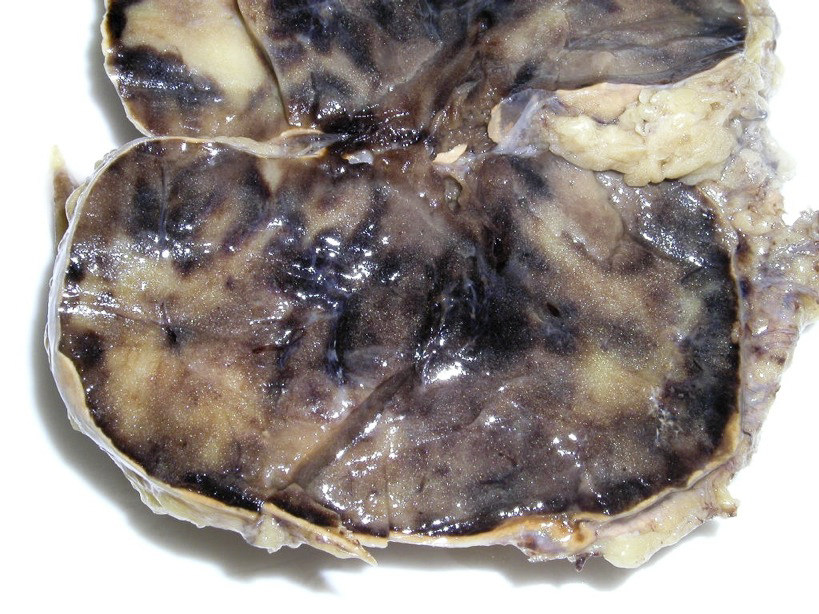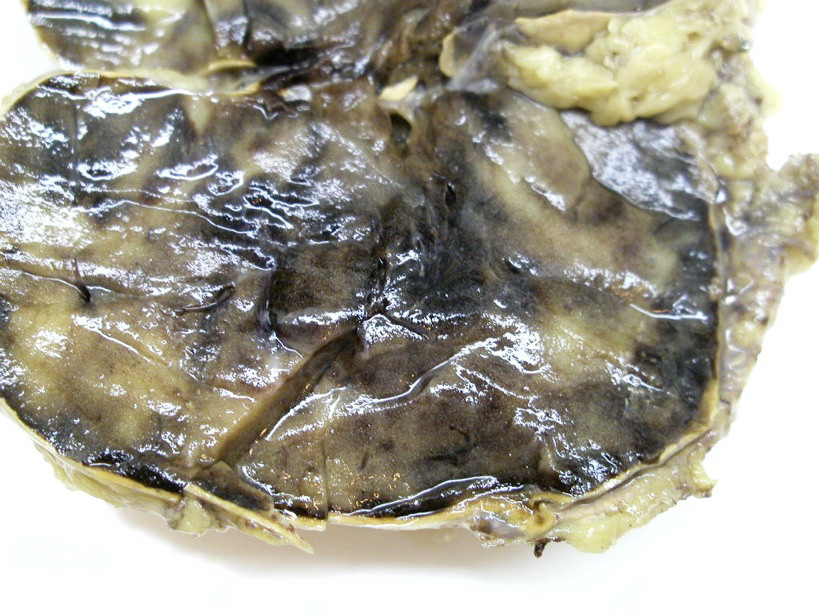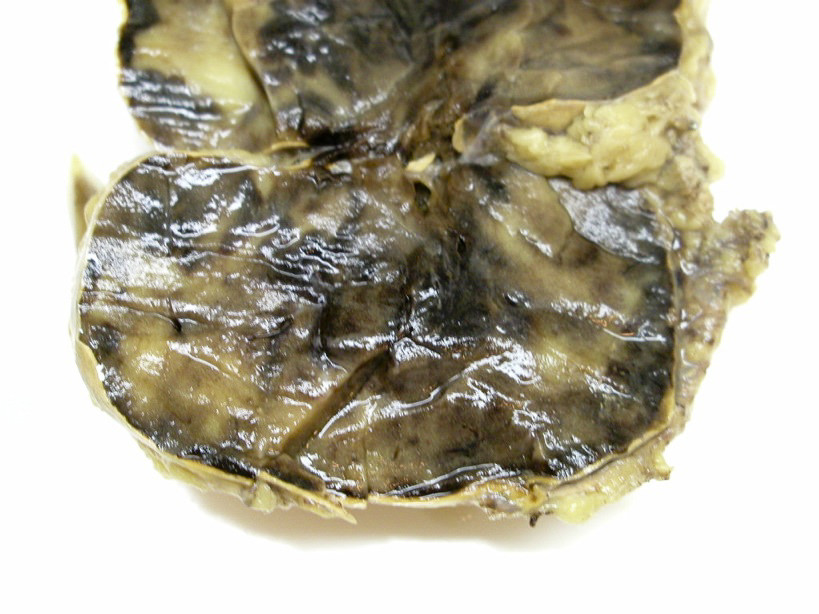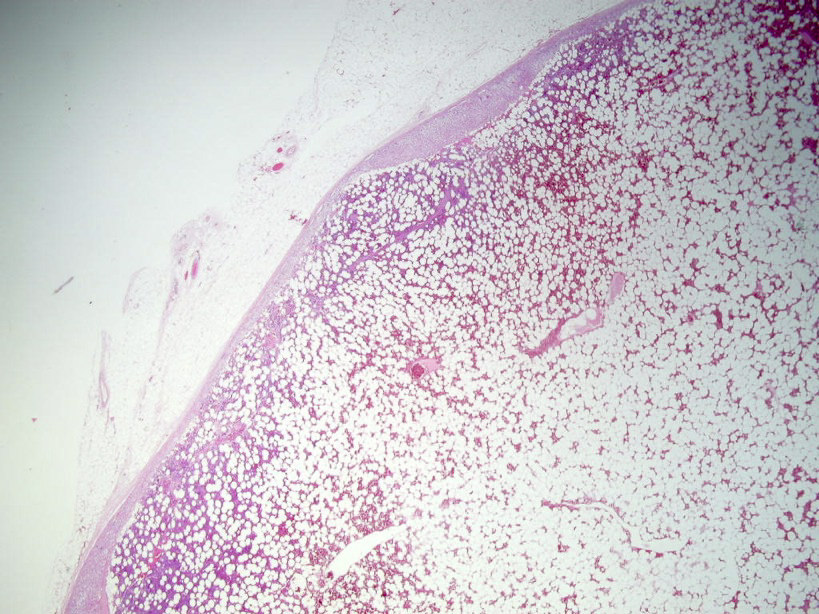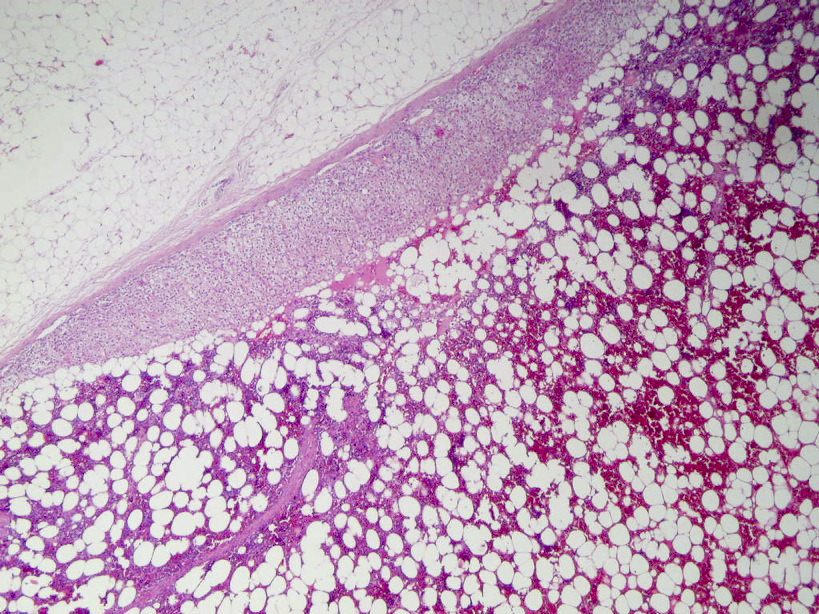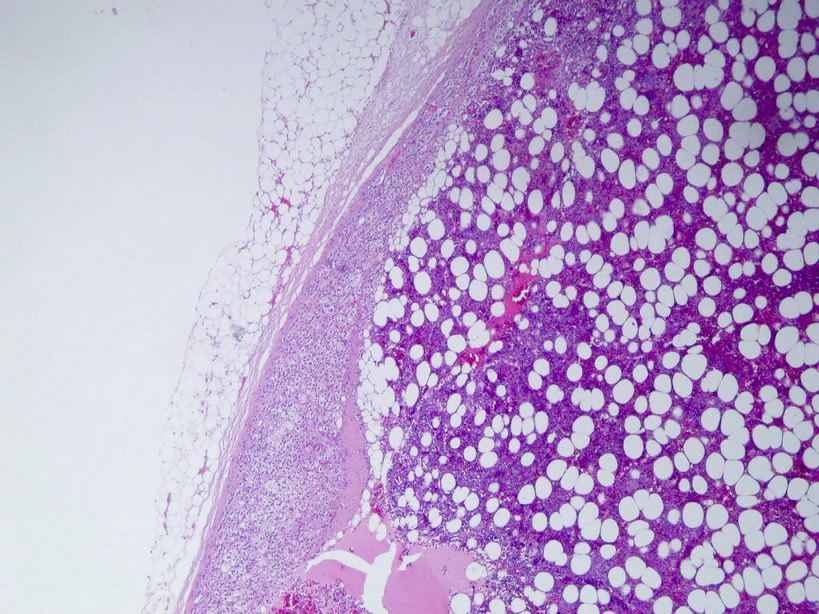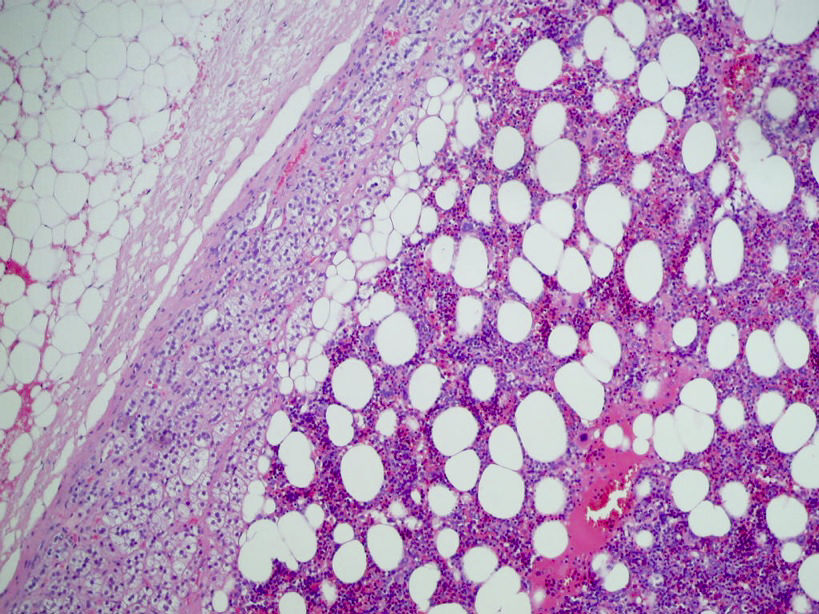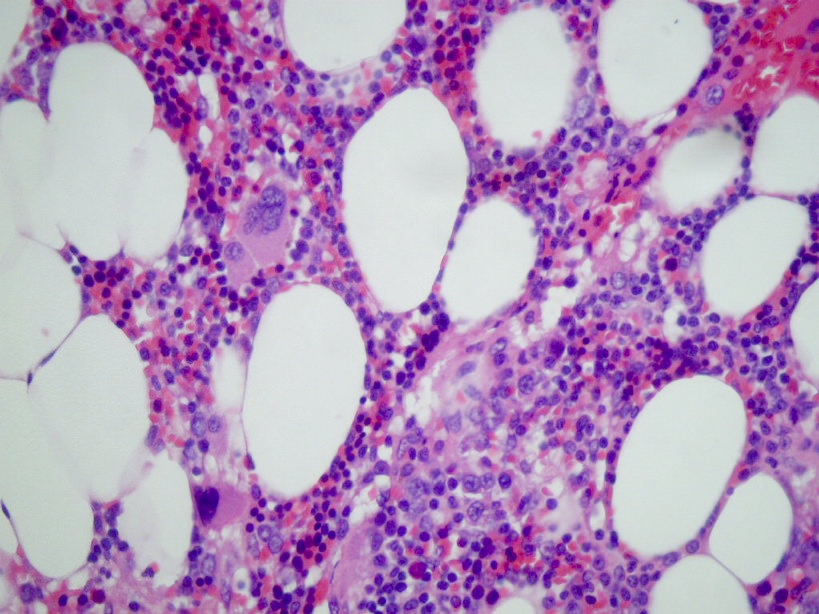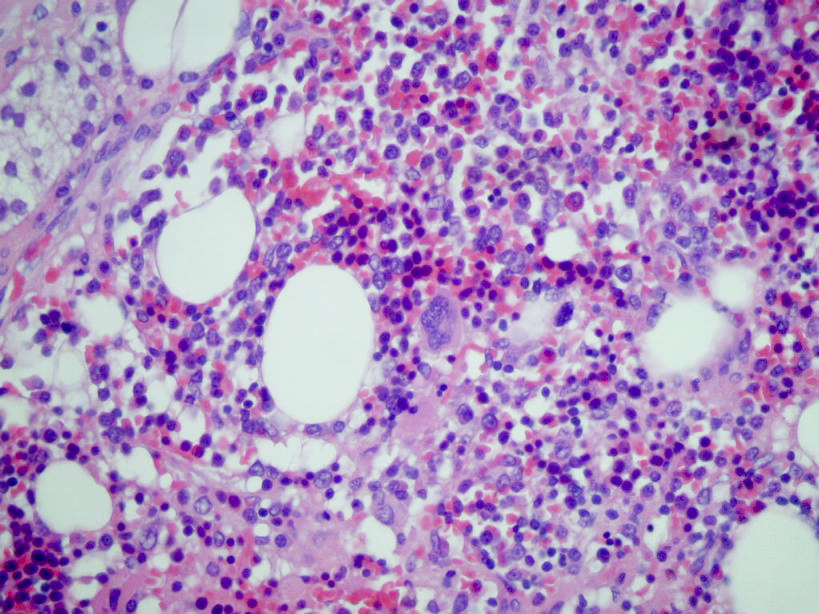
18 February 2010 Case of the Week #170
This email is only sent to subscribers. To subscribe or unsubscribe to this or our other email lists, click here.
All cases are archived on our website. To view them sorted by number, diagnosis or category, visit our Home Page and click on the Case of the Week button on the left hand side.
Website News
(1) We posted a new article on our Management Page, Another Pay Cut for Pathology Practices and Laboratories, by Mick Raich, Vachette Pathology (click here).
(2) We have updated the Acquired non-neoplastic anomalies section of the Bladder chapter.
(3) We have updated the Staging sections for all chapters with information from AJCC Cancer Staging Manual (7th ed).
(4) Thanks to the following contributors of images:
(a) Angel Fernandez-Flores, MD, PhD, Hospital El Bierzo & Clinica Ponferrada, Ponferrada, Spain - trichilemmal type keratinous cysts for the Skin tumor non-melanocytic chapter and warts for the Skin non-tumor chapter.
(b) Andrea L. Wiens, D.O. and Janet E. Roepke, M.D., Ph.D, Ball Memorial Hospital, Muncie, Indiana (USA) - inflammatory cap polyposis for the Colon tumor chapter.
(c) Dr. Nadeem Zafar, Memphis, Tennessee (USA) - oxyphil adenoma for the Parathyroid gland chapter.
Thanks to Dr. David Cohen, Herzliyah Medical Center, Israel, for contributing this case. To contribute a Case of the Week, follow the guidelines on our Case of the Week page.
Case of the Week #170
Clinical History
A 36 year old man presented with a right adrenal mass.
The specimen consisted of a tissue mass of 108 grams, measuring 10 x 6 x 5 cm, where the periphery was surrounded by a rim of fatty tissue.
On section, a peripheral, compressed slither of adrenal cortical tissue was still present, but the medulla was replaced by a hemorrhagic and golden yellow soft mass.
Gross images:
Micro images:
What is your diagnosis?
Diagnosis:
Adrenal gland myelolipoma
Discussion:
Sections showed a thin but essentially normal adrenal cortex at the periphery. The medulla was replaced by a benign proliferation of mature adipocytes interspersed with vascular channels and fresh hemorrhage, most likely due to surgery. The diagnostic finding was the presence of elements from all three hematopoietic cell lines.
Myelolipomas are benign, usually asymptomatic and often incidental lesions typically found in the adrenal region. Grossly, they vary from yellow to red to brown. Microscopic sections show normal adrenal tissue combined with myeloid, erythroid and megakaryocytic forming cell lines (Mod Pathol 2007;20:405). However, they differ from normal bone marrow due to increased frequency of megakaryocytes, reduced frequency of early myeloid precursors, and different vascular and stromal patterns (Am J Surg Pathol 2006;30:838). These tumors may be neoplastic, as 80% have non-random X-chromosome inactivation.
Excision may be necessary if the lesion is painful or presents other symptoms. Large myelolipomas may cause local tissue necrosis, high blood pressure or hematuria. There have been no reports of malignant transformation.
The differential diagnosis includes adrenal adenoma (no hematopoietic elements) and angiomyolipoma (prominent myoid and vascular component, no hematopoietic elements). In addition, myelolipomas can coexist with other adrenal tumors (Arch Pathol Lab Med 2002;126:736).
Additional references: PathologyOutlines.com-Adrenal Gland chapter, Cases J 2009;2:9313, Cases J 2009;2:8414, eMedicine, J Pak Med Assoc 2009;59:491
Nat Pernick, M.D., President,
and Kara Hamilton, M.S., Assistant Medical Editor
PathologyOutlines.com, Inc.
30100 Telegraph Road, Suite 408
Bingham Farms, Michigan (USA) 48025
Telephone: 248/646-0325
Email: NatPernick@Hotmail.com
Alternate email: NatPernick@gmail.com
